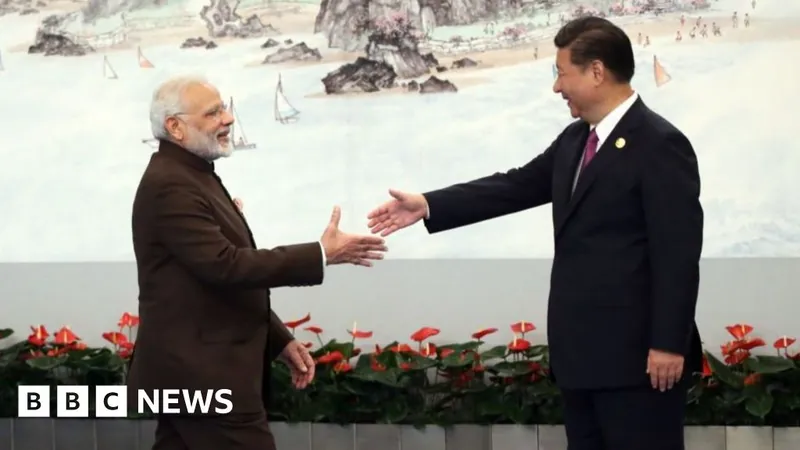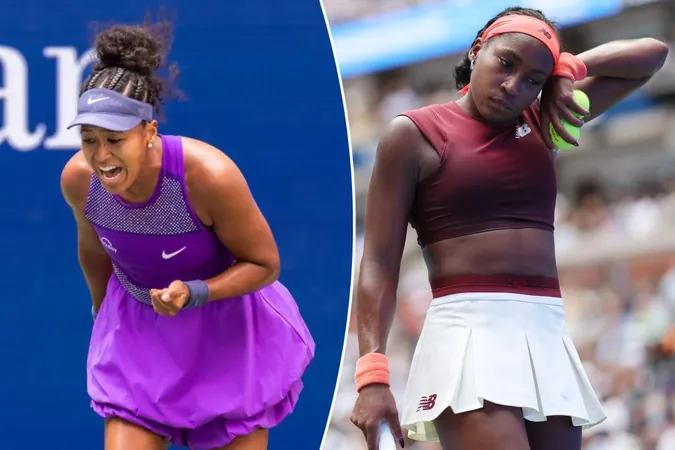
China and India Seek to Mend Ties Amid Trade Turbulence
2025-08-31
Author: Ying
In a momentous move, Indian Prime Minister Narendra Modi touched down in China, grappling with the hefty weight of recent US tariffs imposed on Indian goods. With tariffs on products like diamonds and prawns soaring to a staggering 50%, directly linked to India's oil purchases from Russia, both nations are feeling the economic pinch.
Experts warn that these new levies could bruise India's dynamic export sector and disrupt its ambitious growth trajectory. Meanwhile, China's President Xi Jinping is also scrambling to revive a sluggish economy under the looming shadow of the US trade war.
The stakes are incredibly high: the relationship between these two populous giants has global ramifications. As noted by analysts from Chatham House, the ties between India and China have long been shrouded in mistrust, largely fueled by territorial disputes.
A Potential Turning Point?
Modi's visit offers a glimmer of hope for a reset. With India's economy projected to grow above 6% and aspiring to become the world’s third-largest economy by 2028, there are calls to refocus attention on this critical bilateral relationship as a counterbalance to US-China ties.
However, the path to a stronger partnership is riddled with challenges. The unresolved border issues, highlighted by the violent clashes in Galwan Valley in 2020—which marked the worst hostilities in decades—continuously cast a long shadow over diplomatic efforts.
Navigating Complex Terrain
Additionally, regional dynamics complicate matters further. With India’s already strained relations with its neighbors, and China’s strong trading alliances with countries like Pakistan and Sri Lanka, the balancing act becomes increasingly precarious.
Yet, there are signs of progress. Plans to resume direct flights and ease visa requirements indicate that both nations see potential for mutual benefits. Even amidst previous downplays of the Shanghai Cooperation Organisation (SCO), Modi’s participation hints at a shift in perception towards leveraging regional coalitions.
Global Economic Alliances
As Modi’s journey to China unfolds, it comes on the heels of his visit to Japan, emphasizing India's effort to bolster regional collaborations. The alignment with ASEAN and Japan could pave the way for a more integrated supply chain strategy, particularly beneficial for both countries.
Experts argue that a cooperative economic relationship is essential, given India’s reliance on Chinese manufacturing for crucial raw materials and components. Aiming to ascend in the manufacturing domain, India could attract investments, particularly as global companies like Apple diversify production regions.
Looking Forward
While the complexities of their relationship cannot be resolved in a single diplomatic meeting, Modi’s China visit may signal the beginning of a reconciliatory phase. Ultimately, this engagement sends a strong message to Washington: India holds options—and is open to reshaping the dynamics of global trade amidst escalating tensions.



 Brasil (PT)
Brasil (PT)
 Canada (EN)
Canada (EN)
 Chile (ES)
Chile (ES)
 Česko (CS)
Česko (CS)
 대한민국 (KO)
대한민국 (KO)
 España (ES)
España (ES)
 France (FR)
France (FR)
 Hong Kong (EN)
Hong Kong (EN)
 Italia (IT)
Italia (IT)
 日本 (JA)
日本 (JA)
 Magyarország (HU)
Magyarország (HU)
 Norge (NO)
Norge (NO)
 Polska (PL)
Polska (PL)
 Schweiz (DE)
Schweiz (DE)
 Singapore (EN)
Singapore (EN)
 Sverige (SV)
Sverige (SV)
 Suomi (FI)
Suomi (FI)
 Türkiye (TR)
Türkiye (TR)
 الإمارات العربية المتحدة (AR)
الإمارات العربية المتحدة (AR)